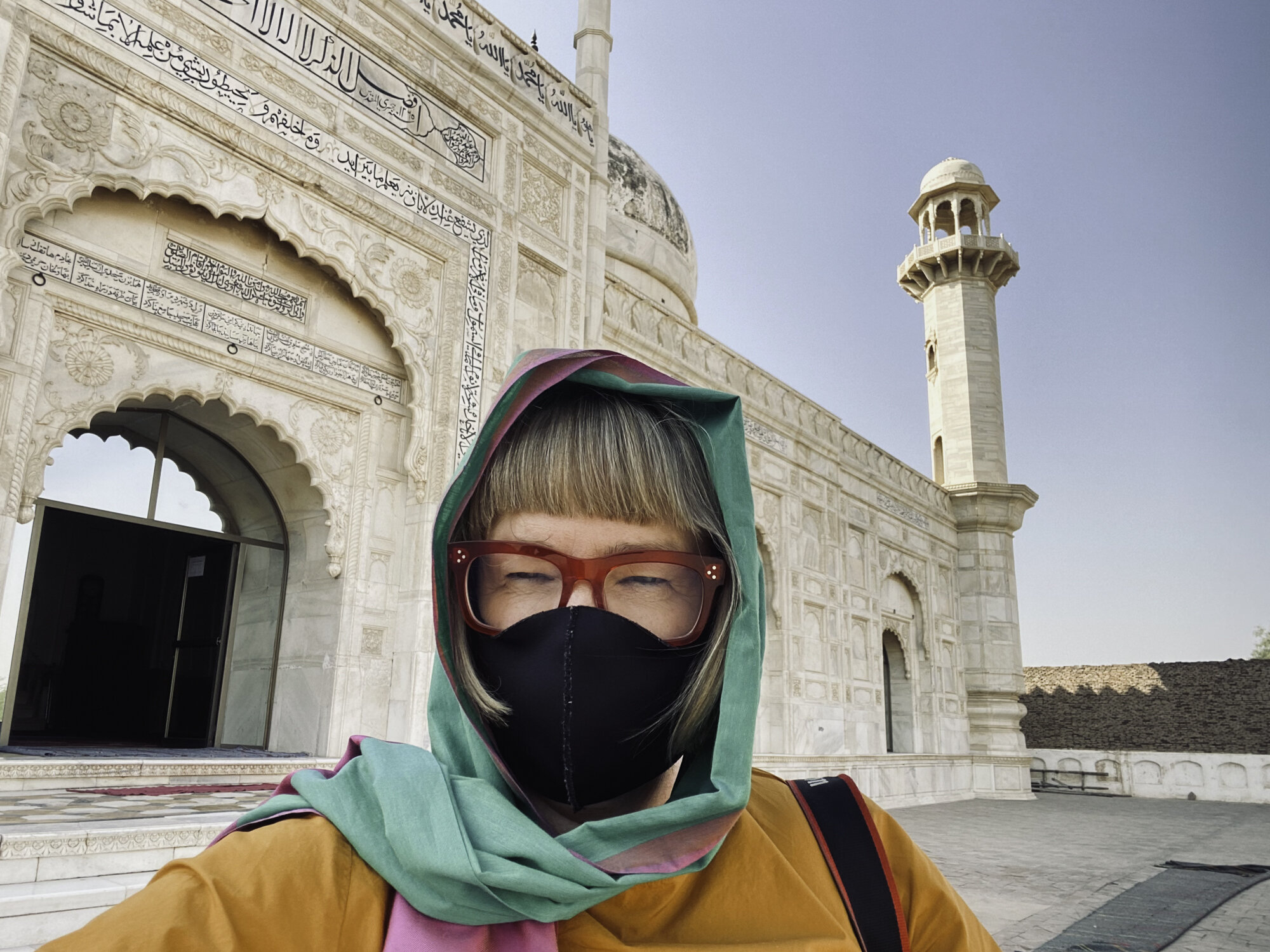Postcards from Pakistan
Postcard from Abbasi Royal Graveyard
Our final stop for the day was the Abbasi Royal Graveyard. It was a short but dusty drive to the graveyard where we waited for the caretaker to come and open the gate. A large key was extracted from a pocket of the caretaker’s shalwar kemeez and the door was slowly opened. There are several tombs here, individual tombs for wives and relatives and the main Nawab tomb. The Nawab tomb contains the graves of all 12 Nawabs that ruled Bahawalpur. The outside is red brick with traditional Multani blue and white glazed tiles. Inside the tomb you can see the individual tombs respectfully covered in white cloth. The interior is highly decorated with frescoes, elaborate wood doors and tile and mirror work. We started our visit to the Cholistan Desert with the fort and man’s attempt to control his environment, we then visited the mosque and contemplated life today and ended at the graveyard and a reminder that one day we will all return to dust.
Postcard from Abbasi Mosque, Cholistan Desert
From the top of one of the bastions of Derawar Fort you can see the Mosque’s three white domes shining through the afternoon haze. The Mosque was built in 1849 by Nawab Bahawal Khan Abbasi. Covered in white marble the mosque is symmetrical with minarets and decorative arches and Islamic calligraphy. The design was supposed to have been inspired by either the Shah Jahan’s Moti (Pearl) Mosque in Agra or the Moti Mosque at the Red Fort in Dehli.
We had time for a quick stop to see the mosque before continuing our journey. We took off our shoes and I covered my head. Inside the courtyard it was hot in the afternoon sun and very quiet. Time for a moment of quiet contemplation.
























